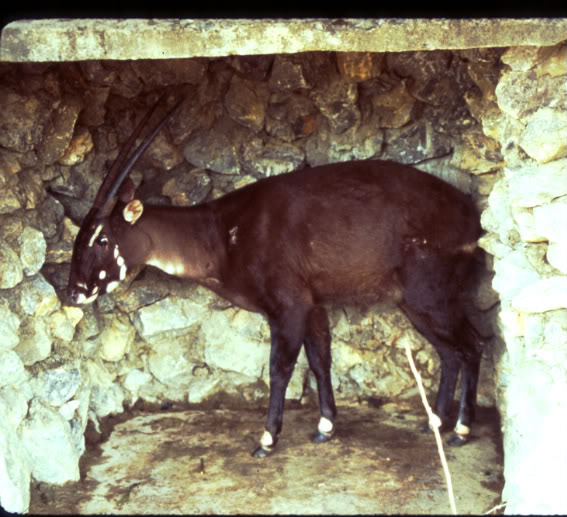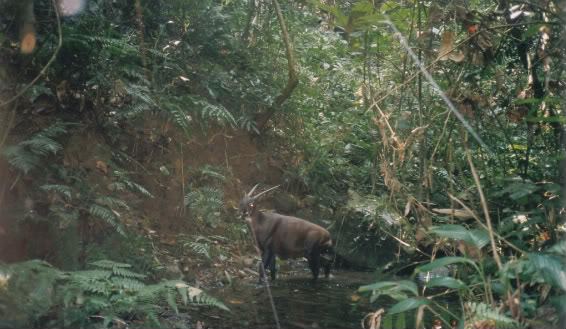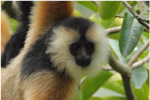Vietnam’s central province of Thua Thien-Hue has approved a project to save the enigmatic saola. Listed as Critically Endangered, the saola (Pseudoryx nghetinhensis) —a type of forest antelope—is so rare and secretive that it was only discovered in 1992. It is considered by many to be one of the world’s rarest mammals.
The project, funded by the Darwin Initiative, Cambridge University, and WWF, will be largely carried out by forest rangers during the next 33 months in Bach Ma National Park and a saola preservation zone. The project includes research, raising public awareness, and managing the protected areas to help the saola’s survival.
“The animal’s prominent white facial markings and long tapering horns lend it a singular beauty, and its reclusive habits in the wet forests of the Annamites an air of mystery,” said Barney Long, of the IUCN Asian Wild Cattle Specialist Group, last September at an emergency meeting to save the species. “Saola have rarely been seen or photographed, and have proved difficult to keep alive in captivity…Its wild population may number only in the dozens, certainly not more than a few hundred.”
The saola’s range extends along the Annamite Mountains in both Vietnam and Loas. The saola is threatened by poaching, dog-hunting, and loss of habitat largely exacerbated by road construction.

Captive female soala. No captive saola has survived longer than a few months. Copyright 1996 by W. Robichaud/WCS.

Wild Saola caught on film by an automatic camera-trap in central Laos in 1999. Photo by Ban Vangban village/WCS/IUCN.
Related articles
Last chance to save a ‘singular beauty’ of Asia: the shy soala

(09/03/2009) Only discovered in 1992, the reclusive and beautiful saola Pseudoryx nghetinhensis may soon vanish from the Earth, if rapid action isn’t taken to save one of Asia’s most enigmatic and rare mammals. Listed as Critically Endangered, the species has experienced a sharp decline since its discovery due largely to poaching. “The animal’s prominent white facial markings and long tapering horns lend it a singular beauty, and its reclusive habits in the wet forests of the Annamites an air of mystery,” says Barney Long, of the IUCN Asian Wild Cattle Specialist Group.

(09/24/2009) There are 200 Tonkin snub-nosed monkeys left in the world. The cao vit gibbon, however, is even worse off with only 110 individuals remaining, giving it the dubious honor of being the second most endangered primate in the world (the closely-related Hainan gibbon with only 17 individuals is likely number one). Both of these species—the cao vit gibbon and Tonkin snub nosed monkey—have received good news recently as new reserves in China and Vietnam have been created in part to aid their survival.
Photos of new species discovered in the Greater Mekong
(12/15/2008) More than 1,000 previously unknown species have been discovered in the Greater Mekong, a region comprising Cambodia, Laos, Myanmar (Burma), Thailand, Vietnam and the Yunnan Province of China, in the past decade, according to a new report from WWF.